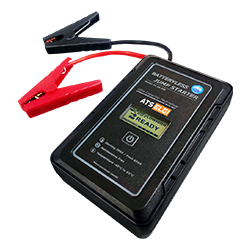Guide to Choose the Right Jump Starter for your Vehicle
Jump Starter
Vehicle jump starting is made possible by jump starters, which are battery-operated portable equipment. Like jumper wires, these gadgets can boost a dead vehicle battery without the need for a second car to supply power. A jump starter functions by providing a sudden surge of high-amperage power to the drained battery, supplying sufficient energy to crank the engine and initiate the vehicle.
Is Jump Starter really necessary?
In the winter, car batteries are more likely to die, causing roadside assistance services to be very busy, resulting in wait times of up to 6 hours before you can continue your journey. With a portable jump starter, you have full autonomy. The jump starter can kickstart your battery solo, with no assistance needed.
Will a Jump Starter start a completely Dead battery?
If the battery is fully drained, it may not be able to start the engine even with a jump start due to lack of power. You will have to change the battery in order to restart your car. Another explanation for why a car battery fails to start is due to an issue with the charging system.
Types of Jump Starters
Jump starters are available in different types and go by different titles like battery-powered jump starters, jump boosters, portable chargers, or booster packs. They can be broadly categorized as either Battery-powered models or Supercapacitor jump starters. Both kinds of jump starters are easily transportable, but the battery-operated ones need to be charged in advance for optimal performance.
Battery Jump Starter
Our favourite choice for purchasing and using are battery jump starters that include an internal battery. Manufacturers commonly use lithium-ion, lithium iron phosphate (LiFePO), or lead acid technology. After you recharge these inside batteries, they can be used to restart various vehicles, including 12V car batteries and light- and medium-duty trucks.
Supercapacitor or Capacitor Jump Starter (Safest)
Super capacitor jump start devices work in a different way compared to jump starters powered by batteries. Pre-charging is not necessary for them, and they are low maintenance. They do not use internal batteries; instead, they rely on internal capacitors that extract energy from a low battery until they gather sufficient power to ignite the engine. Top supercapacitor jump starters can retain their power output reliably in cold weather, while batteries tend to lose efficiency. This feature makes them the preferred option for starting a vehicle in freezing weather.
Choosing the right Jump Starter for your needs
When it comes to vehicle battery management, what’s most important for you in a jump starter? That’s what you should focus on when making your selection.
Do you have a high-displacement engine? Look for higher-capacity jump starters for larger vehicles, and vice versa.
Is size and portability important? If you plan on keeping your jump starter in your car, a Supercapacitor option is best, but lead acid does well if it’s kept in your home or garage on a charger.
Will you use it as a battery bank? For many, you can plug in USB chargers to top up phones and other devices.
What’s your budget? If you’re keeping it low-cost, lead acid is the way to go. But if you have a bit more to spend to get Safest, work at low temperature, better longevity, lower weight, and smaller size, look at Supercapacitor options.
Here, it’s time to Purchase ATS ELGI BatteryLess Jump Starter
Our Battery Less Jump Starter designed for 12V vehicles, can re-boost a battery in less than 2 mins approx. as it contains Ultracapacitors instead or lithium battery which is more versatile
SAFER Reduced risk of overcharging, overheating, or leaking hazardous chemicals.
ENVIRNOMENTAL FRIENDLY as they do not contain toxic materials in conventional batteries.
Features
- Built-in safety
- Compact size
- Maintenance Free
- Cold weather performance
- Long Cycle life
- Quick Charing & Discharging

REFERENCES:
https://www.protoolreviews.com/types-of-jump-starters/https://www.autozone.com/diy/battery/lead-acid-vs-lithium-ion-jump-starters
